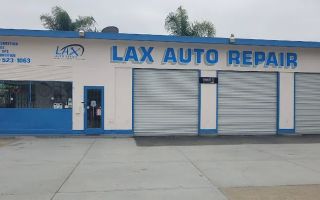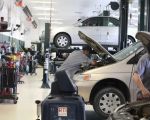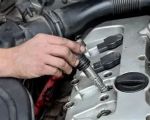- The Importance of Checking Your Driveshaft Flex Joint
- What Is a Driveshaft Flex Joint and What Does It Do?
- Signs of a Failing Flex Joint – When to Take Action
- Real-Life Cases of Flex Joint Failure
- How to Inspect Your Flex Joint Safely
- Why Regular Inspection Matters – Safety and Cost Savings
- When to Seek Help from Professionals like Rescue & Towing
- Maintenance Tips for a Longer Lifespan
1. The Importance of Checking Your Driveshaft Flex Joint
Your car’s driveshaft flex joint might not be the first thing you think of when it comes to maintenance, but it plays a critical role in ensuring smooth and safe driving. This flexible coupling connects the transmission to the driveshaft, allowing it to absorb torque and movement between parts. Over time, wear and tear can cause it to degrade, leading to serious vibrations, noise, and even drivetrain failure if ignored.
Understanding the importance of checking your driveshaft flex joint helps you avoid dangerous breakdowns and costly repairs. A small inspection today could save you from a complete driveshaft replacement tomorrow.

Pick Your Part - Help Yourself
1232 Blinn Ave, Wilmington, CA 90744, USA
2. What Is a Driveshaft Flex Joint and What Does It Do?
The driveshaft flex joint—also known as a guibo—is typically made of reinforced rubber with embedded metal sleeves. It’s designed to handle small misalignments and absorb shocks as the drivetrain transfers power from the transmission to the rear differential.

Pick Your Part - Greer
13054 E Wade Hampton Blvd, Greer, SC 29651, USA
2.1 The Engineering Behind It
While it might seem like a simple rubber part, the flex joint endures massive forces. During acceleration, it twists slightly, reducing vibration and preventing metal-to-metal contact. Without it, your car would feel harsh and unstable, especially at higher speeds.
2.2 Where It’s Found
Most rear-wheel and all-wheel drive vehicles use a driveshaft flex joint. It’s usually located at the front of the driveshaft, near the transmission, though some cars may have multiple joints depending on the drivetrain layout.
3. Signs of a Failing Flex Joint – When to Take Action
A damaged or failing flex joint doesn’t always cause immediate breakdowns, but early warning signs can escalate quickly. Here’s what to look for:
3.1 Vibration During Acceleration
If you feel vibrations or shaking through the floor or steering wheel when accelerating, it could be due to an imbalanced or cracked flex joint. Many drivers mistake this for tire issues, but it often originates from the drivetrain.
3.2 Clunking Noises
A dull “thunk” sound when shifting gears or during sudden acceleration is a red flag. This noise indicates that the rubber in the flex joint is wearing thin, allowing metal components to strike each other.
3.3 Visible Cracks or Tears
When inspecting under the car, look for cracks, missing chunks, or oil-soaked rubber around the joint. Oil contamination can weaken the rubber, accelerating deterioration.
3.4 Unstable Driving Feel
If your car feels wobbly, especially at highway speeds, it could be a sign of flex joint imbalance. This instability isn’t just annoying—it’s dangerous, as it can lead to drivetrain misalignment or shaft separation.
4. Real-Life Cases of Flex Joint Failure
In 2023, a Florida driver shared a viral post after his BMW’s driveshaft disconnected while cruising on the freeway. The cause? A completely torn flex joint that went unchecked for months. Another case involved a delivery truck driver in Texas whose vehicle developed severe vibrations before the driveshaft snapped, resulting in a costly repair and two weeks of downtime.
These cases highlight the importance of checking your driveshaft flex joint during routine maintenance. A failing joint can go from minor wear to catastrophic failure in a short time, especially under heavy load or high-speed driving.
5. How to Inspect Your Flex Joint Safely
Regular inspection can help identify problems before they escalate. You don’t need advanced tools—just a good flashlight and basic automotive awareness.
5.1 Visual Check
Look under your car near the transmission area. If you see cracks, frayed rubber, or loose bolts, it’s time for a replacement. The joint should look solid and symmetrical without any distortion.
5.2 Listen for Sounds
When starting your car or changing gears, pay attention to subtle clunks or squeaks. These noises often point to flex joint degradation or misalignment.
5.3 Check for Leaks
Leaking oil from the transmission or differential can seep onto the flex joint, softening the rubber. If you notice oil stains around the area, address both the leak and the joint immediately.
6. Why Regular Inspection Matters – Safety and Cost Savings
Ignoring your driveshaft flex joint doesn’t just affect comfort—it can compromise your vehicle’s safety. A severely worn joint can cause the driveshaft to detach, damaging the undercarriage and leading to total power loss while driving.
Beyond safety, regular inspection saves money. Replacing a flex joint costs significantly less than a full driveshaft assembly or towing service. It’s one of those maintenance tasks where prevention truly pays off.
7. When to Seek Help from Professionals like Rescue & Towing
If you notice persistent vibrations, unusual noises, or visible damage to the flex joint, professional help is essential. A certified mechanic can perform a proper diagnosis using lift equipment to inspect both the joint and the surrounding drivetrain components.
Rescue & Towing offers fast, reliable towing and inspection services for drivers dealing with sudden drivetrain failures. Whether your car breaks down on the highway or simply feels off, their expert network ensures safe transport and repair guidance to get you back on the road quickly.
For peace of mind, regular professional inspections are worth the investment—especially if your car frequently carries heavy loads or travels long distances.
8. Maintenance Tips for a Longer Lifespan
While the driveshaft flex joint will eventually wear out, these simple habits can extend its life significantly:
8.1 Keep the Area Clean
After driving through mud, salt, or rain, rinse the undercarriage. Debris buildup can lead to corrosion and rubber degradation over time.
8.2 Avoid Aggressive Driving
Sudden acceleration and hard gear shifts place extra stress on the flex joint. Drive smoothly to reduce strain on drivetrain components.
8.3 Schedule Routine Inspections
Have your mechanic check the joint every 15,000 miles or during routine oil changes. Early detection can prevent breakdowns and improve vehicle performance.
Ultimately, checking your driveshaft flex joint is one of the smartest ways to protect your vehicle’s longevity and ensure a safe, comfortable ride. And when something does go wrong, remember that Rescue & Towing is always ready to assist with expert service and dependable roadside support.




























